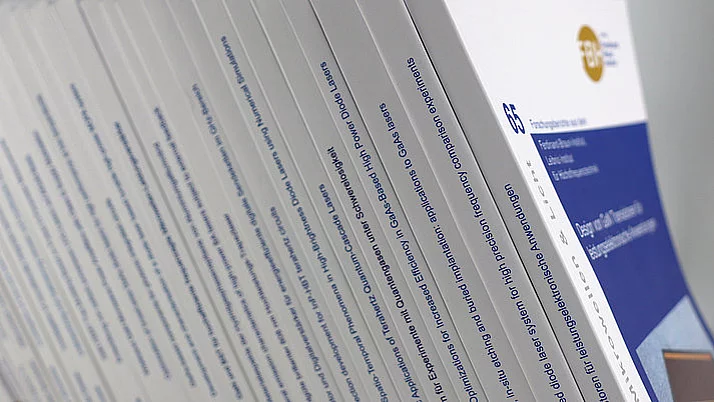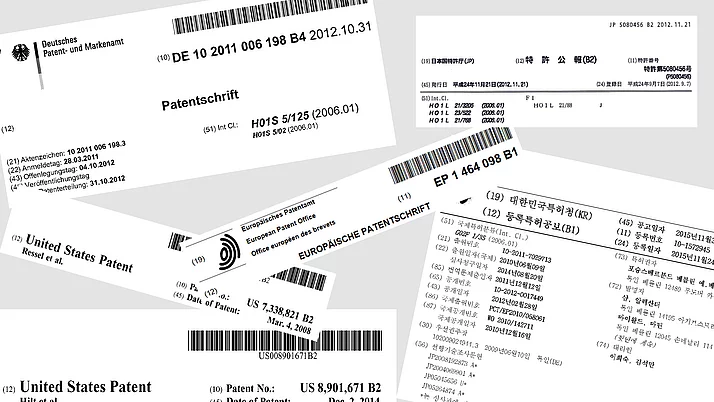High-power diode lasers with in-situ-structured lateral current blocking for improved threshold, efficiency and brightness
M. Elattar, O. Brox, P. Della Casa, A. Mogilatenko, A. Maaßdorf, D. Martin, H. Wenzel, A. Knigge, M. Weyers and P. Crump
Published in:
Phys. Scr., vol. 98, no. 1, pp. 015506, doi:10.1088/1402-4896/aca637 (2023).
Abstract:
We present high-power GaAs-based broad-area diode lasers with a novel variant of the enhanced self- aligned lateral structure ‘eSAS’, having a strongly reduced lasing threshold and improved peak conversion efficiency and beam quality in comparison to their standard gain-guided counterparts. To realize this new variant (eSAS-V2), a two-step epitaxial growth process involving in situ etching is used to integrate current-blocking layers, optimized for tunnel current suppression, within the p-Al0.8GaAs cladding layer of an extreme-triple-asymmetric epitaxial structure with a thin p-side waveguide. The blocking layers are thus in close proximity to the active zone, resulting in strong suppression of current spreading and lateral carrier accumulation. eSAS-V2 devices with 4 mm resonator length and varying stripe widths are characterized and compared to previous eSAS variant (eSAS-V1) as well as gain- guided reference devices, all having the same dimensions and epitaxial structure. Measurement results show that the new eSAS-V2 variant eliminates an estimated 89% of lateral current spreading, resulting in a strong threshold current reduction of 29% at 90 µm stripe width, while slope and series resistance are broadly unchanged. The novel eSAS-V2 devices also maintain high conversion efficiency up to high continuous-wave optical power, with an exemplary 90 µm device having 51.5% at 20 W. Near- field width is significantly narrowed in both eSAS variants, but eSAS-V2 exhibits a wider far-field angle, consistent with the presence of index guiding. Nonetheless, eSAS-V2 achieves higher beam quality and lateral brightness than gain-guided reference devices, but the index guiding in this realization prevents it from surpassing eSAS-V1. Overall, the different performance benefits of the eSAS approach are clearly demonstrated.
Ferdinand-Braun-Institut (FBH), Gustav-Kirchhoff-Str. 4, 12489 Berlin, Germany
Keywords:
broad-area diode laser, high power, self-aligned, epitaxial regrowth, in situ etching, current blocking, lateral current confinement
© 2022 The Author(s). Published by IOP Publishing Ltd.
Original content from this work may be used under the terms of the Creative Commons Attribution 4.0 licence. Any further distribution of this work must maintain attribution to the author(s) and the title of the work, journal citation and DOI.
Full version in pdf-format.


